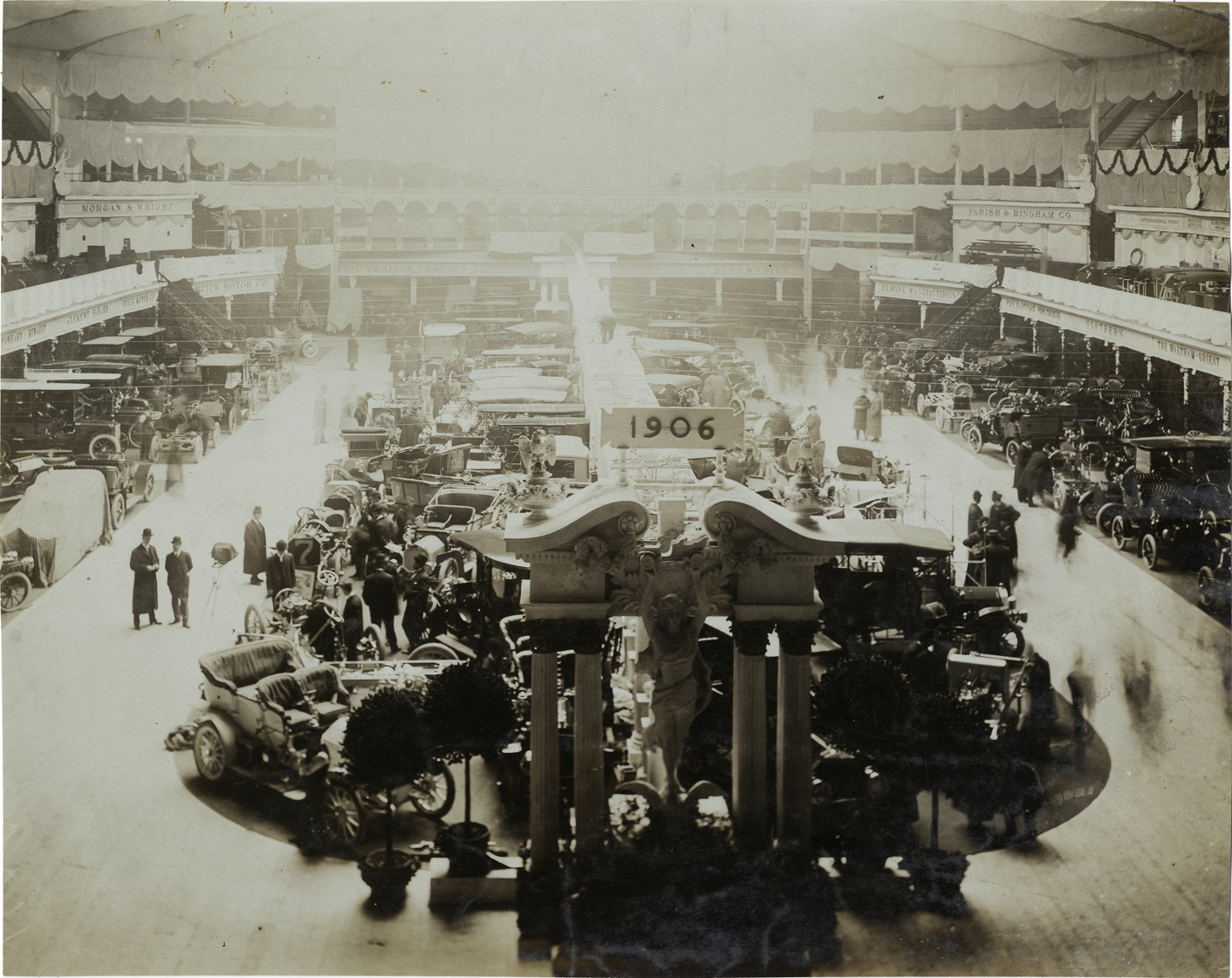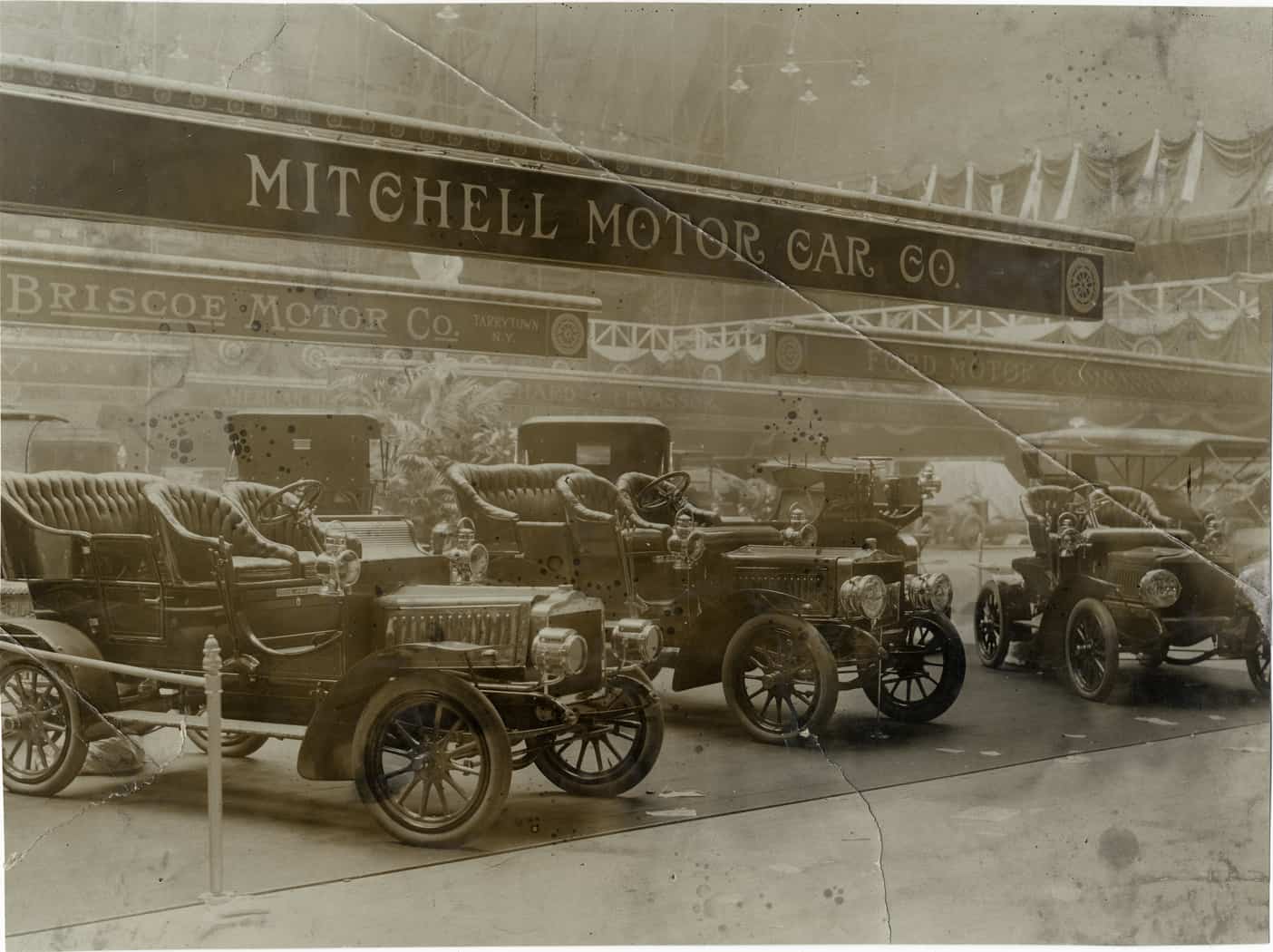I wrote earlier this week about Brian Corey’s new book, This Day in Automotive History. As I paged through the book, it stopped for a while on January 13, where his entry features the first car show staged by the American Motor Car Manufacturers Association. The car show opened on that date in 1906 at the brand-new 69th Regiment Armory, which is located on Lexington Avenue between East 25th and 26th streets in New York City.
A little additional and tangential research unveiled that the 69th Infantry Regiment headquartered at the building left the Battle of Gettysburg known as the “Fighting Irish,” that it was in the Armory that the first modern art show was held (in 1913, featuring works by Picasso, Matisse, Van Gogh and others), that they used to run full marathon races inside the armory, which also hosted the first televised roller derby matches, that the New York Knicks played their games there for 14 years, and that subsequent uses have included the Victoria’s Secret fashion show.
What I found most interesting about the display for that day in Corey’s book was the map of the show floor layout, a plot indicating each automaker’s stand.

There are Ford, REO, Stoddard-Dayton, Maxwell, Oakland, Marmon, Hupp, Pierce and American Simplex, and also such import brands as Renault, Panhard, Fiat, Lancia, Isotta, Austin, C.G.V. (Charron), Delahaye, DeDion and DeDietrich.
But also present were Cartercar, Holsman, Moline, Glide, Ohio, Pennsylvania, Speedwell, Midland, Standard, Chandler, American, Moon, Regal, Atlas, Pullmam, National, Mora, Mitchell, Brush, Premier, McIntyre.
What struck me was the long list of automakers that no longer exist, that and the fact that the country’s inaugural auto show predated the launch of Chevrolet, Chrysler, and so many other automotive brands.
It’s auto show season again across the country with the OEMs and their various regional dealer groups showcasing their newest vehicles (I almost wrote “latest and greatest,” but I’m not sure that’s really accurate).
In conjunction with the huge North American International Auto Show in Detroit, a recent newsletter from the Motor Cities National Heritage Area looked back 50 years to what then was known as the Detroit Auto Show (Motown’s annual new-car show was held in November, not in January, back then).
One theme for the show was “the year of intermediates,” with many automakers now in full production of vehicles that were larger than their compacts but smaller than their full-size offerings, thus giving Goldilocks and other customers more buying options toward finding the car that was “just right.”
Soon, “just right” for car enthusiasts would be the way that Detroit started cramming big engines under the hoods of those intermediate-sized vehicles. Voila! The muscle car was born.
Also featured at the show were imports, such as the Austin Healy 3000, the Ford Cortina, as well as new models from Triumph and Volkswagen, which in 1968 unveiled its “Automatic Stick-Shift.”
And don’t you wonder if there will even be new car auto shows 50 years from now, and if so, will any of those new cars still come with a steering wheel?
Popular with show-goers, we’re told, was a display of recreational vehicles, including truck campers and “air-stream” trailers.
I hoped the newsletter might include a show-floor map like that from the 1906 New York show, so we could see which automakers no longer are in business, or are new to the business since then. Alas, it did not.
But I did find some photos on the internet that show the Detroit show stands of Pontiac and Plymouth — remember them? — and also one of a relative newcomer to the American automotive marketplace, Toyota.
And while searching for a Detroit show-floor map, I also came across the fact that just a couple of months after that 1968 Detroit show, New York staged its annual auto show, which is where Honda made its U.S. debut as an automaker, displaying its 1,213-pound, front-driven, four-seat N600 model, complete with a semi-automatic Hondamatic transmission.
Today, if you want to see Pontiacs and Plymouths, or Delahayes and DeDions, you go to collector car auctions or car museums. And don’t you wonder if there will even be new car auto shows 50 years from now, and if so, will any of those new cars still come with a steering wheel?





